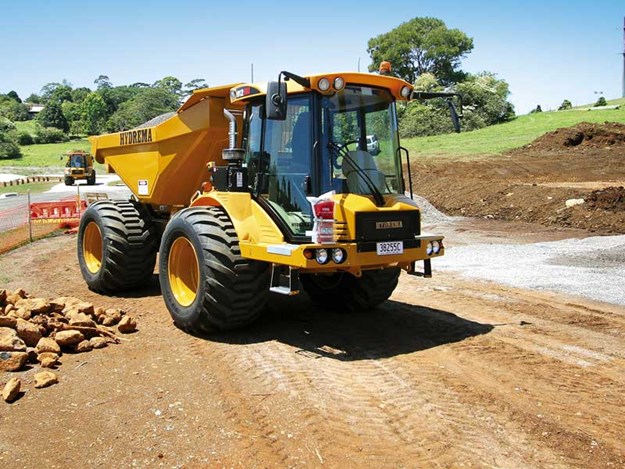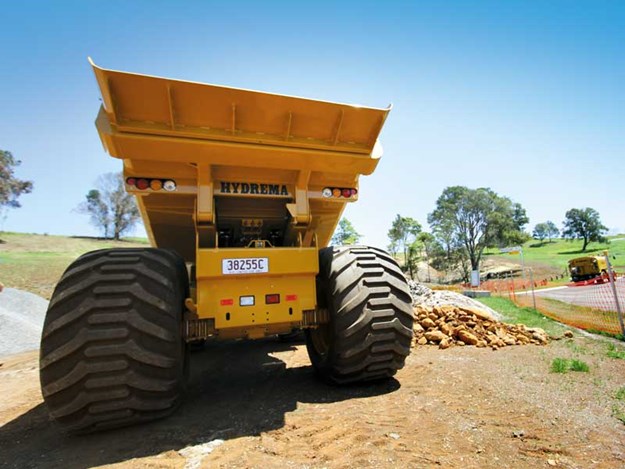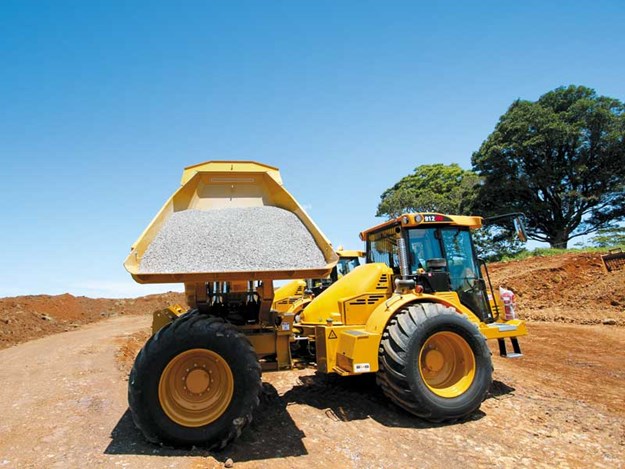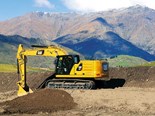Review: Hydrema 912ES compact dump truck
Evarn Covich takes one of Danish company Hydrema’s 912ES compact articulated dump trucks for a spin, and finds it ticks all the boxes
 |
|
The Hydrema 912 dump truck on the Sayer Civil site in the Sunshine Coast hinterland
|
Knowing a bit about Denmark’s Hydrema Group, I was keen to try out the company’s German-made 912ES compact dump truck when one was made available recently.
Straight off, I wasn’t disappointed.
These trucks seem to be built robustly, with driver comfort and ease of operation at the forefront. Although I was on Queensland’s Sunshine Coast to check out the 912ES truck, I was fortunate enough that Blake Machinery Group managing director Cameron Blake had also supplied a 912HM model to look over.
 |
|
The HM (High Mobility) model has wider axles in order to accommodate larger wheels and tyres
|
The only major difference between the two trucks is that the HM has wider axles to accommodate larger wheels and tyres, hence the HM, or High Mobility, moniker.
Its lower ground pressure than the ES makes it more useful around areas with soft or swampy ground. Other than that, both trucks are virtually the same.
Walk around
 |
|
The 912’s tipping body can be swivelled 90 degrees to either side of the truck |
The first thing to catch my attention was the 912ES’s size. With a width of around 2.5 metres with standard tyres, a wheelbase of a touch over three metres and a maximum height of around 2.8 metres, it’s a compact machine with the ability to manoeuvre around almost any construction site.
It’s a cute machine when you look at the large amount of glass on the operator’s cab, but the heavy-duty robotic welding construction of the frame and tipping body also makes it look well engineered.
 |
|
The large amount of glass provides for excellent vision around the cab
|
Mounted to the chassis with liquid-filled supports to reduce vibration and noise, the Cummins QSB 4.5-litre engine is a 16-valve, common-rail, intercooled turbo diesel complying with stage 3b/4i emission standards.
It produces a maximum output of 141hp (105kW) at 2000rpm (nine percent more than its predecessor) with a maximum torque of 620Nm at 1500rpm (an increase of 20%). This is claimed to be the highest power-to-weight ratio on the market in its class. The ZF WG115 fully automatic transmission offers six forward and three reverse gears.
The electronically monitored soft-shift transmission automatically shifts up two gears if the conditions are right, making acceleration quicker and smoother regardless of the payload. The floor of the 5.6-cubic-metre tipping body is constructed using flat panels, which helps if you want to scoop material out of the back using an excavator with a flat bucket.
Being able to swivel the body 90 degrees to either side of the truck is an added bonus as you’re able to drive along next to a trench while backfilling around pipes, etc. This saves a lot of time and money. Auto body return aids cycle times and keeps the driver’s attention focussed on what’s in front of him or her.
In the cab
 |
|
The various compartments are roomy and lockable
|
The Hydrema 912ES series trucks have shock absorbers positioned at the back of the cab as close to the driver’s seat as possible to help with driver comfort. They also come standard fitted with ROPS and FOPS.
The cab has eight headlights as well as work lights mounted on the roof on each side of the cab and to the rear of the roof. There’s also the added bonus of a reversing camera. The door handle is easily reached from the ground and the hanging step makes the climb into the cab rather effortless.
I did, however, feel that maybe the door could be made to open a little wider in order to accommodate those who, like me, are a bit wider around the girth than most. Once I settled into the driver’s seat, I was able to appreciate the space inside the cab, including a generous amount of legroom.
All controls and switches are within easy and are clearly labelled and self-explanatory, including the joystick for operating the tub and selecting gears. The steering column is fully adjustable, telescoping in and out, and tilting up and down.
The latter also moves the dash to provide the best view for the operator. The large amount of glass provides for excellent vision around the whole cab, helped by Hydrema keeping the size of the dashboard and steering column to a minimum.
On the job
Cameron Blake was able to organise a test drive of these machines on a Sayer Civil subdivision at Maleny in the beautiful Sunshine Coast hinterland north of Brisbane. The site had some steep gradients as well as some rolling hills and flat ground so we could perform a bit of off-road work as well as a bit of easy stuff.
We couldn’t have asked for too much more. I cranked the Hydrema 912ES into life and, after a few seconds, felt the slight jerk upwards as the electro-hydraulic front spring suspension system kicked into life.
This system features independent suspension cylinders and level control for the front wheels to make for a more comfortable and stable ride. I was impressed with the smoothness of the acceleration and, after doing a couple of laps, I positioned myself under the excavator in order to be loaded.
With a blast of the horn from the excavator driver, I was loaded and on my way to the dump area. To tell you the truth, the truck felt pretty much the same loaded as it did empty.
On arriving at the tip area, I had to try out the swivel tip function, didn’t I? So once I was in position, I pulled back on the joystick to start putting the body up, then also moved it to the right to start slewing the body around at the same time.
Before I knew it, there was a load of dirt sitting right next to the truck. I could hardly feel any movement in the truck at all while the load was being tipped off at a 90-degree angle.
Overall, I felt that the truck seemed to respond to everything that I threw at it without too much effort and all the while feeling stable and comfortable to operate.
The bottom line
Having done civil work from subdivisions to pond and dam building and from construction sites to dump maintenance and rehabilitation, it’s easy for me to see how a piece of equipment like the Hydrema 912ES compact dump truck can be utilised in almost any application.
With a 5.6 cubic metre body offering up a 10-tonne payload, it probably finds itself in a bit of a niche market. In the past onsite work performed by trucks, this size would have to be carried out by six-wheeler road tippers or the like, but as we all know, they do not perform too well once the ground starts to get chewed up or a shower of rain passes by.
The low ground pressure of these Hydrema trucks mean that they can run around your average site for a lot longer without chewing up the ground, and with the four-wheel drive and pivot steer they are able to keep running long after others have given up due to bad weather and conditions.
Other than having to take care of hitting my head on entry and exit to the cab, I cannot find anything that I am able to fault with this particular unit. I feel that Hydrema has pretty much addressed everything required in order to produce a well-balanced truck that anyone would be happy to operate for hours at a time and that would be able to handle just about anything that the earthmoving industry can throw at it.
Hydrema 912ES specifications
| Operating weight |
8000kg (empty) |
| Engine | Cummins QSB |
| Max power | 105kW |
| Load capacity | 10,000kg |
| Ground clearance | 450mm |
Keep up to date in the industry by signing up to Deals on Wheels' free newsletter or liking us on Facebook.


.jpg)



.jpg)


.jpg)

.jpg)





